Colony count_Innovative technology (1): Level set active contour model
Colony counting is a basic and time-consuming operation in microbiology experiments. In recent years, there have been some automatic colony counters that provide convenience for routine colony detection. However, for some complicated situations, such as serious wrinkles on the surface of the colony, blurred edge contours, the color of the colony is very close to the color of the medium, the colony grows on the filter membrane containing the grid, etc. (Figure 1 below), the general colony counter cannot Implement counting statistics.
This is because, the core problem of colony counting, we must first extract each colony from the background of the medium, and then we can count it. Current segmentation technologies are mainly based on edge-based segmentation methods and region-based segmentation methods. Edge-based segmentation methods, such as edge gradient method or boundary detection by Hough transform, are detected based on the gradient information of the colony edge; however, it is completely unsuitable for the situation where the colony edge is blurred and the surface unevenness gradient information is rich. The area-based image segmentation method is commonly used as a threshold segmentation method, but it is completely powerless when the color of the colony is very close to the color of the medium.

Figure 1 The image of colonies in a complex situation
In order to solve the colony statistics under the above complex situation, Xunshu_Technology team has spent two years researching on the basis of in-depth research on the most advanced international image segmentation technology based on level set active contour model, combined with specific problems to make bold attempts and improvements And innovation, finally successfully developed a series of segmentation statistical methods for different colony characteristics.
1. Image segmentation method based on level set active contour model
The image segmentation method based on the level set active contour model is a combination of the level set method and the active contour model. During the process of minimizing the energy function, the active contour continuously approaches the segmentation target until the active contour line stops evolving. Because this method has the advantages of strong noise resistance, good numerical solution stability, smooth and continuous segmentation boundary, and can deal with complex topological structures, it has become one of the most advanced image segmentation technologies in the world.
The basic principle of this method is to embed a curve or surface into a high-dimensional level set function, and use a high-dimensional function to express the evolution process of a low-dimensional curve or surface (Figure 2 below).
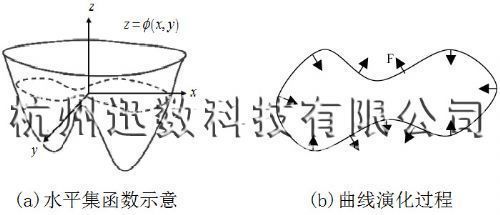
Figure 2 Basic principle of level set active contour model
Establish a two-dimensional energy functional (ie CV model) with closed curve length and area smoothing constraints:
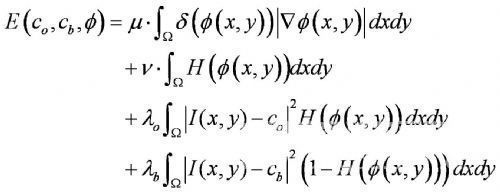
In the above formula, I (x, y) is the gray level of each pixel point in the image, and co and cb are the average gray level values ​​inside and outside the colony outline, respectively. The first two items of the above formula are used to control the smoothness of the colony contour curve, and the latter two items drive the contour line to shrink to the actual colony contour. Minimizing the energy function completes the separation of the colony image.
2. Fast algorithm for level set active contour model
The image segmentation method based on the CV model has the advantages of strong anti-noise, smooth and continuous segmentation boundary, and can deal with complex structures. But there is an important problem in practical application, that is, the calculation speed is slow. The traditional level set active contour model segmentation method involves the construction of a level set function and the need to solve partial differential equations for each iteration, resulting in a large amount of calculation and a very slow calculation speed, which is difficult to actually adopt. To this end, the Xunshu_Technology team first studied and solved the calculation speed problem of the CV model.
Define the discrete grid area of ​​the image as D, the target area as Ω, the background area as DΩ, and the grid point x = (x1, x2) ∈ Ω. Define two linked lists, the inner area adjacency list (Lin) and the outer area adjacency list (Lout), used to represent the outline as follows:
among them
Is the 4 neighborhood points of point x. When the contour line C is determined, the linked lists Lin and Lout are also uniquely determined, as shown in FIG. 3. Comparing Figures 3 (a) and 3 (b), when the point A moves from the linked list Lout to the linked list Lin, the point A changes from the exterior area point (exterior point) to the interior area point (interior point). A pixel is extended outside to realize the evolution of the curve. Similarly, point B is moved from the linked list Lin to the linked list Lout, that is, the contraction of the curve is realized. This fast curve evolution method does not need to solve PDE, and the calculation speed is greatly improved.
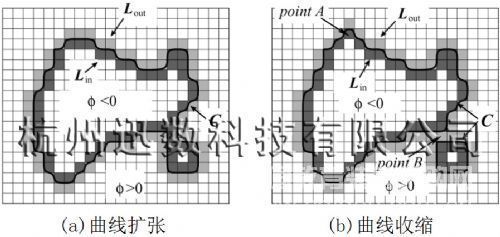
Figure 3 Schematic diagram of rapid level set evolution
3. Segmentation effect of surface fold mold
Figure 4 shows the different effects of different divisions on mold. Among them, Figure 4-a is the original picture of mold, its surface folds are rough and the edges are rough. Figure 4-b is the segmentation result obtained by the traditional threshold segmentation method. Due to its rough surface, the gray distribution is uneven and the edges are rough and discontinuous, resulting in a poor segmentation effect. Figure 4-c is the segmentation effect of the fast algorithm based on the level set active contour model developed by Xunshu Technology. This algorithm is particularly suitable for the complex internal situation of the target, and the contraction and smoothness of the active contour can be controlled to achieve the desired effect.
Figure 4 Different segmentation effects of single mold
Figure 6 shows multiple molds on the plate, and the traditional level set active contour model cannot achieve the segmentation of multiple targets. To this end, Xunshu Technology has researched and developed a multi-phase level set fast active contour model algorithm.
First, a single level set model is used for pre-segmentation, then a single level set area is split to obtain multiple level set areas, and finally a fast model is used to accurately segment each mold. For multiple non-sticky molds and multiple sticky molds, the eight-chain code contour tracking method and the random Hough circle detection method were used to split the single level set region. Practice shows that this method can accurately and quickly divide multiple non-adhesive and multiple-adhesive molds.
The energy functional of the multiphase level set segmentation algorithm is:
The operation process is shown in Figure 5:
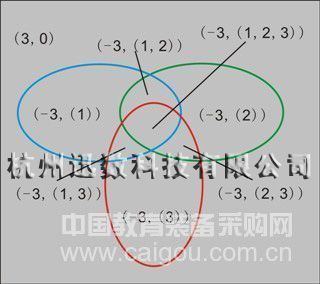
Figure 5 Multi-region level set diagram
The multi-phase level set fast active contour model algorithm is used to segment multiple molds as shown in Figure 6, and the results are shown in Figure 6. Among them, Figure 6-a is the original image of a multi-mold plate, not only the rough edges of the surface folds, but also the number of molds. Figure 6-b is the segmentation result obtained by the traditional threshold segmentation method. Due to its rough surface, the gray distribution is uneven and the edges are rough and discontinuous, resulting in a poor segmentation effect. Figure 6-c is the segmentation effect of the fast algorithm based on the multi-phase level set active contour model developed by Xunshu Technology. Except that some mold adhesion is very serious and there is no distinction, most molds are well segmented.
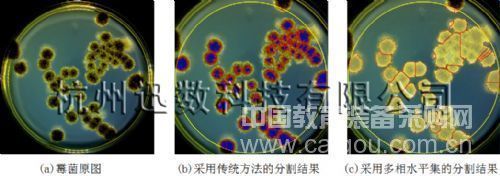
Figure 6 Different segmentation effects of multiple molds
4. Outlook
The image segmentation method based on the level set active contour model has the advantages of strong noise resistance, good numerical solution stability, smooth and continuous segmentation boundary, and can handle complex topological structures. It has become one of the most advanced image segmentation technologies in the world. . After more than two years of research and development, Xunshu Technology R & D team has not only mastered this advanced technology, but also aimed at the characteristics of microbial colonies. Based on the traditional level set active contour model, creative research and development has developed a suitable colony segmentation count The advanced image segmentation technology such as the fast active contour model and the multi-phase level set active contour model have achieved accurate statistical counting of complex colonies and highly difficult plates.
R & D Department of Hangzhou Xunshu Technology Co., Ltd. 2013-7-22
- The go-to spatula for flipping eggs, omelets, burgers, hashbrowns, pancakes and more! The beveled head glides effortlessly under filsh fillets and quesadillas, and transfers warm cookies from baking sheet to cooling rack with ease!
- Soft enough to bend to scrape the bottom of pans, yet firm enough to lift up fish and eggs.
- High heat resistant nylon to 410F/210C.
- Non-slip handles with thumb grip provides superior control.
- Safe for nonstick, it's good for helper in the kitchen.
Solid Spatula,Kitchen Tools Solid Spatula,Stainless Steel Solid Spatula,Solid Spatulas With Wooden Handle
Yangjiang Homelife Industry & Trading Co., Ltd. , https://www.kitchenutensil.de